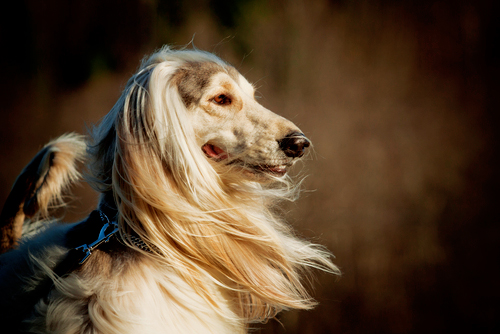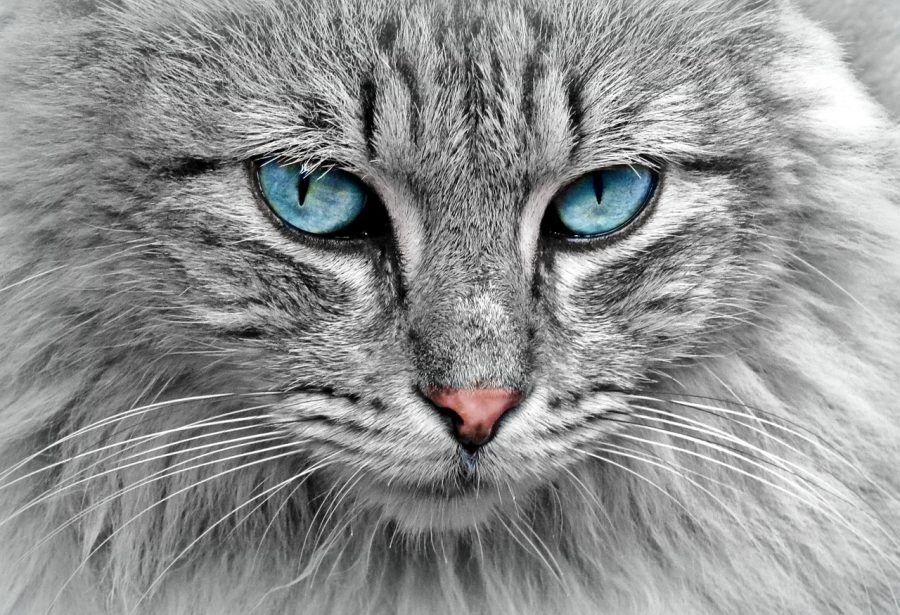

Smt. Maneka Sanjay Gandhi
When my husband died I was 23 years old. The next few years were stressful, to put it mildly, and by the time I was 27 my hair had started turning white. I started dyeing when I was in my early thirties. Every month I have a battle with myself. I want to let my hair grow out white- and yet I am scared of the interim two years in which the half white/black hair looks unkempt.
A study by the Northern Illinois University and Colorado State University, and published in Applied Animal Behaviour Science, shows that stress has the same effect on dogs. Researchers met 400 owners who answered a 42 item questionnaire on their dog’s behaviour, age and health. These were the findings: Dogs that go through tough times go grey. Young dogs between 1-4, whose owners rated them as very anxious and impulsive, were far more likely to have prematurely grey muzzles than calmer, better treated dogs.

To gauge anxiety levels, researchers asked questions about behaviour, including whether the dog destroyed things when left alone, whether the dog had hair loss during vet exams, or when it entered new places, and whether the dog cringed or cowered in response to groups of people.
To rate impulsivity, the researchers asked whether the dogs jumped on people, whether they could be calmed, if they had a loss of focus and whether they were hyperactive after exercise. Researchers, who had never met the dogs, graded them on a scale of 0 to 3, with 0 indicating no muzzle greyness and 3 indicating full muzzle greyness. Female dogs had higher levels of greyness than males, researchers found. Moreover, dogs that showed fearfulness toward loud noises, and unfamiliar animals and people, tended to have increased greyness.
Other studies published in Experimental Dermatology have shown that stress changes hair colour in mice by accelerating aging. (Political leaders move rapidly to white hair within a few months of taking office.)

Colour changes take place all the time in dogs. White dogs tend to develop a rust-coloured stain beneath their eyes, because the tears wet the hair and encourage the growth of a red-tinted yeast which darkens to a brownish colour over time. Stains, from dyes and minerals in a dog’s food and water, show up in dogs with white coats. Minerals found in tap or well water also can stain the hair around his mouth; plastic feeding bowls may harbour tiny cracks that house bacteria which grow in the hair, causing discoloration as they multiply. Artificial colouring in food can transfer to his hair as he eats, leaving him with a stained ring around the mouth.
Dogs lick themselves clean during grooming, but this can result in unsightly stains in an otherwise clean coat. Bacteria present in saliva can grow and multiply in the dog’s hair, causing a stain to appear and darken over time. The most common problem areas for licking-caused stains are the legs, paws and nether-regions.
The most frequent reason for a dog to persistently lick himself is allergies. The fur is stained brown. It eventually goes away once the allergies clear up. But, many dogs need prescription medications to help with the itching. The most effective medicines are steroids such as prednisone.
Black dogs often develop dark brown patches and this is sometimes due to the sun which bleaches the coat to make it lighter. However, colour patches are also due to malnutrition. Sometimes steroids, antifungals, chlorambucil, or antacids change the coat colour.

A deficiency of copper or tyrosine in the food can also cause the colour of the coat to change. Copper-rich foods are shellfish, beans, nuts, kidney & liver, whole grains, sesame seeds, barley, turnip greens, and molasses and tyrosine-rich foods– tofu, lima beans, yogurt, cheese, chicken, bananas.
An excess of zinc then interferes with copper absorption. Zinc-rich foods include legumes, cereals, meat. If the dog is getting more zinc-rich foods than copper-rich foods an imbalance causes a black coat to lighten. Milk and eggs interfere with copper absorption. The dog needs a varied diet. Black hair fading to brown is another example of how important food is to pet health.
Excessive or harsh shampoos also affect Dobermans, Dachshunds, Great Danes, Yorkshire Terriers, Whippets, and Greyhounds and cause their coats to change colour.
There are a number of medical conditions that can cause hair loss, or changes in pigmentation, in dogs. These range from infectious skin conditions, such as mange and flea dermatitis, to hormonal deficiencies such as hypothyroidism or Cushing’s disease, to more serious illnesses such as cancer.

Cushing’s disease is a hormonal defect that causes changes in coat colour in dogs. There is an increase in corticosteroids in the body in this disease – either due to increased production by the body, or as a side effect of high doses, or prolonged therapy with corticosteroids. Hair loss, thinning of skin, hyperpigmentation, easy bruising, seborrhea, black heads, lethargy, increased thirst and urination and pot-bellied appearance, are common signs of this.
Hypothyroidism, resulting from decreased production of thyroid hormone, is another hormonal disorder that affects the skin and hair in dogs. Hair loss, dry and brittle hair, seborrhea; secondary bacterial and yeast infections and changes in skin pigmentation may occur.

Malassezia pachydermatis is a yeast found on the skin and ears of dogs. Though a normal inhabitant of these regions, an abnormal overgrowth of the yeast can cause dermatitis, or inflammation of the skin. Patches of skin becoming darker and epidermal thickening, irritation of skin and loss of hair are common signs in this disease. Malassezia dermatitis can affect any breed of dog, but these breeds are more prone: poodles, basset hounds, cocker spaniels, and dachshunds.
Sometimes the nose colour of a dog changes. Black noses turn chocolate brown to light pink; more common in Yellow Labs, Golden Retrievers, Poodles, and Dobermans. There is no known cause and no remedy.

Lentigo is inherited in pugs and involves circular brownish-black areas of coloration.
Dachshunds have an inherited problem called Acanthosis in which the skin darkens. Puppies sometimes change colour as they mature. For instance, Dalmatians and Australian cattle dogs start off pale and get their markings as they age. Great Dane puppies start mostly black and get more tan as they mature. Beagles do the same. Finally, some breeds do change colour over their lifetimes. Bearded Collies have a dominant greying gene. Born jet black, the coat turns to light silver in a year and then grey as the dog grows. Old English Sheepdogs also have this gene.
The ravages of time affect everyone who is lucky enough to age. Skin and hair are especially susceptible to changes relating to maturing. As an individual goes through life, hair changes. It may grow thinner, coarser. It may change colour. It is especially common for darkly pigmented hair to become lighter. Pigment takes a great deal of energy for the body to make. Bodies are prone to directing resources towards other needs. Like people, dogs tend to lose pigmentation in their fur as they get older. Generally, white or greying fur on an elderly or middle-aged dog is most noticeable around the muzzle, although white or grey hairs can spring up throughout the dog’s entire coat. If your dog is advanced in years but otherwise healthy, then greying or thinning hair is most likely nothing to worry about.

Dogs are incredibly sensitive beings who pick up on our emotions and energy very quickly. They do not deal at all well with anxiety, stress and negative energy. Too much stress, such as constant arguing and fighting in the house, can cause dogs to suddenly lose their fur or get white hair. They can be disturbed by changes in routines, new homes or loud noises, travelling, and going to the vet. After removing the source of the stress from the dog’s environment, or removing the dog from the stressful situation, its fur will most likely grow back in time – but the white hair will remain.






